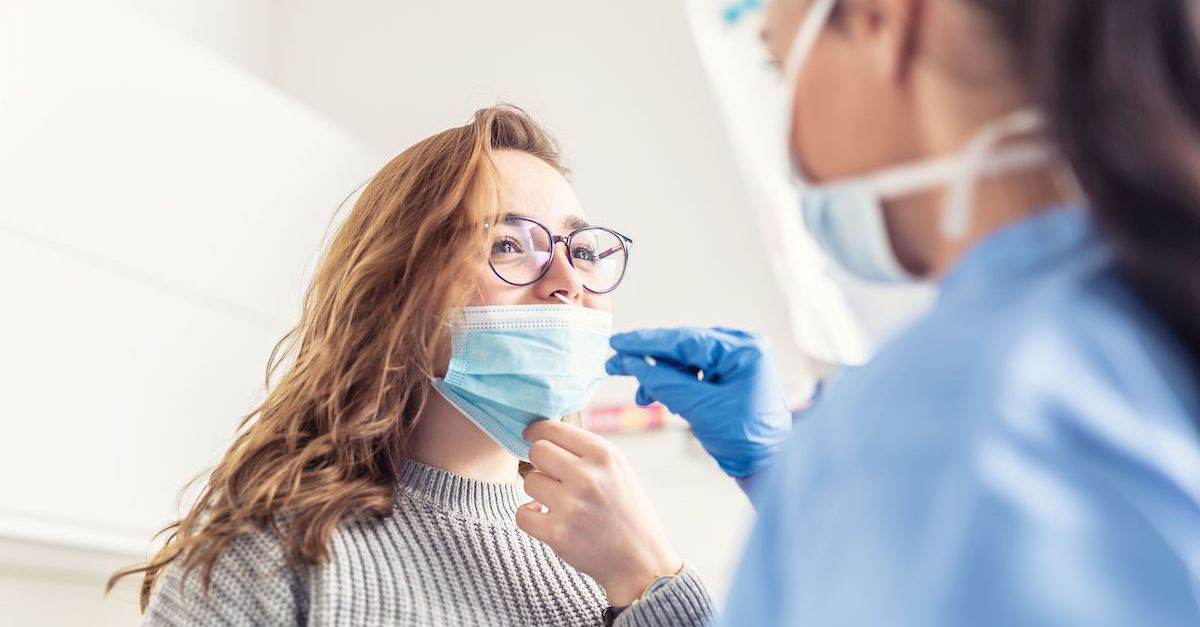Cardinal Health MarketSM
The legacy Cardinal.com Medical Ordering site has been replaced with Cardinal Health MarketSM, a new product experience designed with you in mind.

Throughout the COVID-19 pandemic, experts in diagnostic testing have continued to develop new tests for respiratory pathogens, new testing methodologies and new approaches.
Testing can play an important role in surveillance, identifying those with COVID who are asymptomatic and need to isolate. And, some tests, called serologic tests, show prior infection or a level of immune response to COVID-19 by looking for antibodies in the blood.
As tests become better, faster and more widely available, they are helping to save lives.
“From the beginning, once tests received Emergency Use Authorization (EUA) from the Federal Drug Administration (FDA), Cardinal Health has worked to expedite their availability to customers,” said Emily Berlin, Cardinal Health’s vice president of marketing and product management for Laboratory Products.
“With schools, sports organizations and businesses now regularly using COVID-19 tests, we’ve all become more accustomed to testing,” Berlin continued. “Going forward, such common regular testing will continue to help limit the spread of infectious diseases.”
Diagnostic testing is likely to continue to expand from traditional, centralized lab testing, to include more options for molecular point of care testing (POC), Berlin noted. (Molecular testing refers to the detection of specific DNA or RNA sequences in a specimen, and POC means a test given outside of a lab that provides rapid, reliable results.) At-home testing options also are likely to expand.
Here, Berlin identifies several trends in the development of respiratory diagnostic tests, and shares what they’re likely to mean for the future of health care.
An increase in molecular POC testing
Molecular POC test menus are still maturing – meaning that they are limited in what they can test for. Currently, POC tests are limited to respiratory infections and Strep A. Though limited in their capacity, Berlin said, “the benefits of deploying near-patient technologies are clear. They can deliver rapid, accurate results to patients without the wait time of core lab molecular testing.”
POC testing also offers the potential for expanding new testing locations, like drive-through COVID-19 testing sites, which increase convenience and use, and minimize patient exposure.
“There are some potential drawbacks of decentralized POC testing, including inconsistent specimen collection, relatively higher cost per test and supply chain constraints due to increased demand,” Berlin said. “Fortunately, though, technology advances are making smaller POC instruments that are also simpler to operate and less expensive, which should help mitigate some of the potential downsides.”
More at-home testing
In the early stages of the pandemic, the only at-home testing solution available to the public was a collection kit, where the consumer-collected samples from a nasal swab were sent to a lab for processing and then waited days for the results.
Today, there are several at-home COVID-19 tests available. Rapid antigen tests include the Abbott BinaxNOW™ COVID-19 Antigen Self-Test and the Quidel QuickVue® At-Home OTC COVID-19 Test. Since August 2021, Cardinal Health has leveraged its expansive distribution network to make these tests broadly available. Cardinal Health now also distributes the nation’s first molecular diagnostic test for at-home use without a prescription, developed by Cue Health. This test features both greater diagnostic accuracy and rapid results than other at-home tests.
“In the near future, I think we may see a continued expansion of at-home testing for other infectious diseases,” Berlin said. “That will be particularly helpful for patients who are unable or unwilling to make it into a clinic.”
Testing more with less
Recently, multiplex testing for more than one type of virus has become more common. Multiplex testing enables physicians to make more comprehensive diagnoses for patients presenting with symptoms associated with multiple viral respiratory infections, like SARS-CoV-2 (the virus that causes COVID-19), influenza A and B, and the cold-like respiratory syncytial virus (RSV). For laboratories, multiplex testing means using fewer consumables, helping to reduce waste, cost and technician time.
Another methodology that allows more testing with less is sample pooling. This involves combining the same type of sample collected from multiple people, then evaluating the pooled sample with a diagnostic test. During the pandemic, sample pooling has allowed labs to increase the volume of testing while using fewer testing materials; individual samples only need to be tested if a pooled test returns a positive result. (This testing works particularly well when there is a low prevalence of cases.)
Using genomic sequencing to detect variants
As viruses spread, they mutate, as we’ve learned with the COVID-19 Delta and Omicron variants. Genomic sequencing means decoding the genetic material of a virus in a lab to identify the mutations early and identify what their impact might be.
“In a worst-case scenario, a COVID-19 variant could emerge that is both immunity and vaccine resistant,” Berlin said. “I think we will see more consistent use of genetic sequencing, so that such a variant could be identified early.”
Cue Health, mentioned above, has collaborated with Google Cloud to enable real-time respiratory viral variant sequencing and tracking through artificial intelligence (AI). As Fierce Biotech reports, the companies hope to soon use this technology to provide more comprehensive information about the spread of COVID-19 – as well as other infectious diseases – to public health officials.
The future of testing
Diagnostics experts and innovators are continuing to develop new respiratory pathogen tests, methodologies and approaches, Berlin said. “The tests and technology that enable faster results, improve the patient experience, save lab technicians time and empower both patients and clinicians are likely to continue to have a significant impact on public health. Ideally, we’ll continue to see further collaboration and ideation – because both patients and clinicians now want and need accurate and timely diagnosis at home or close to home.”